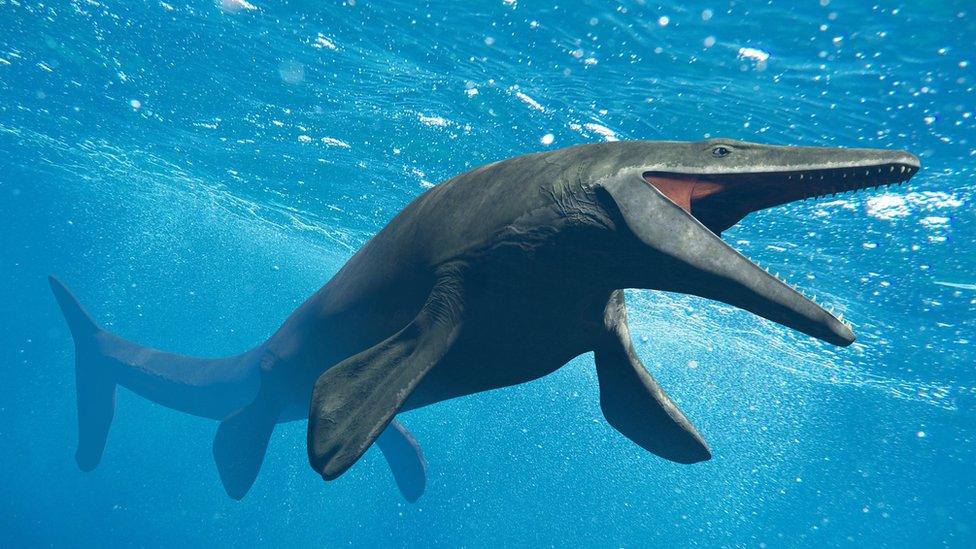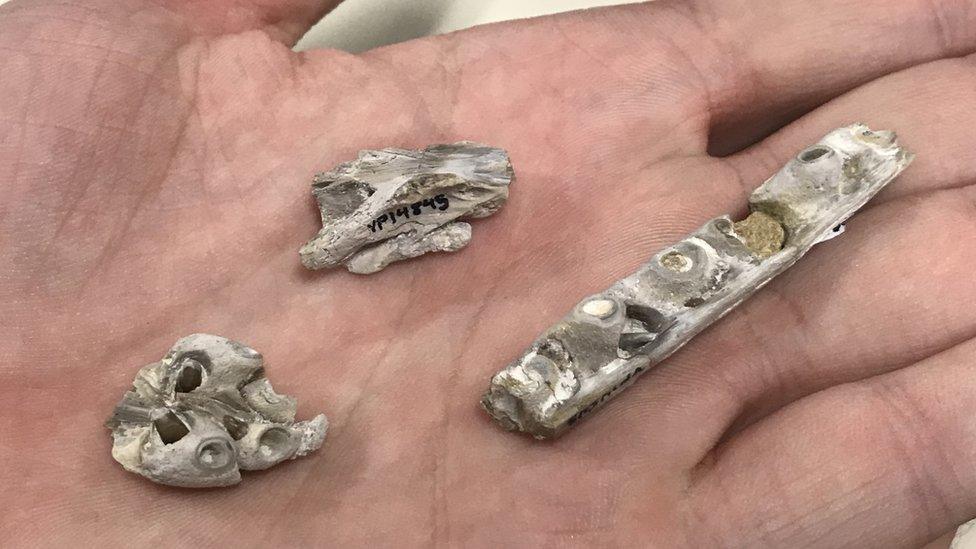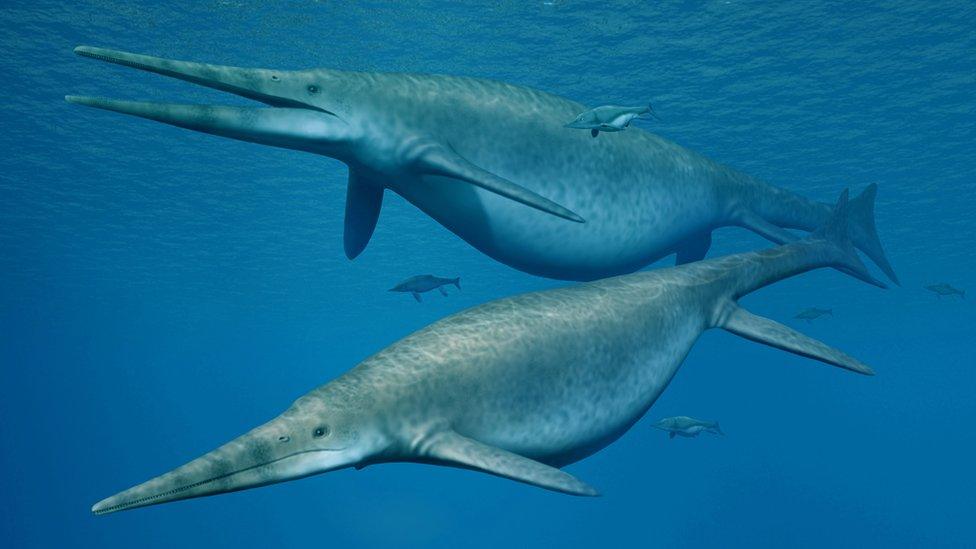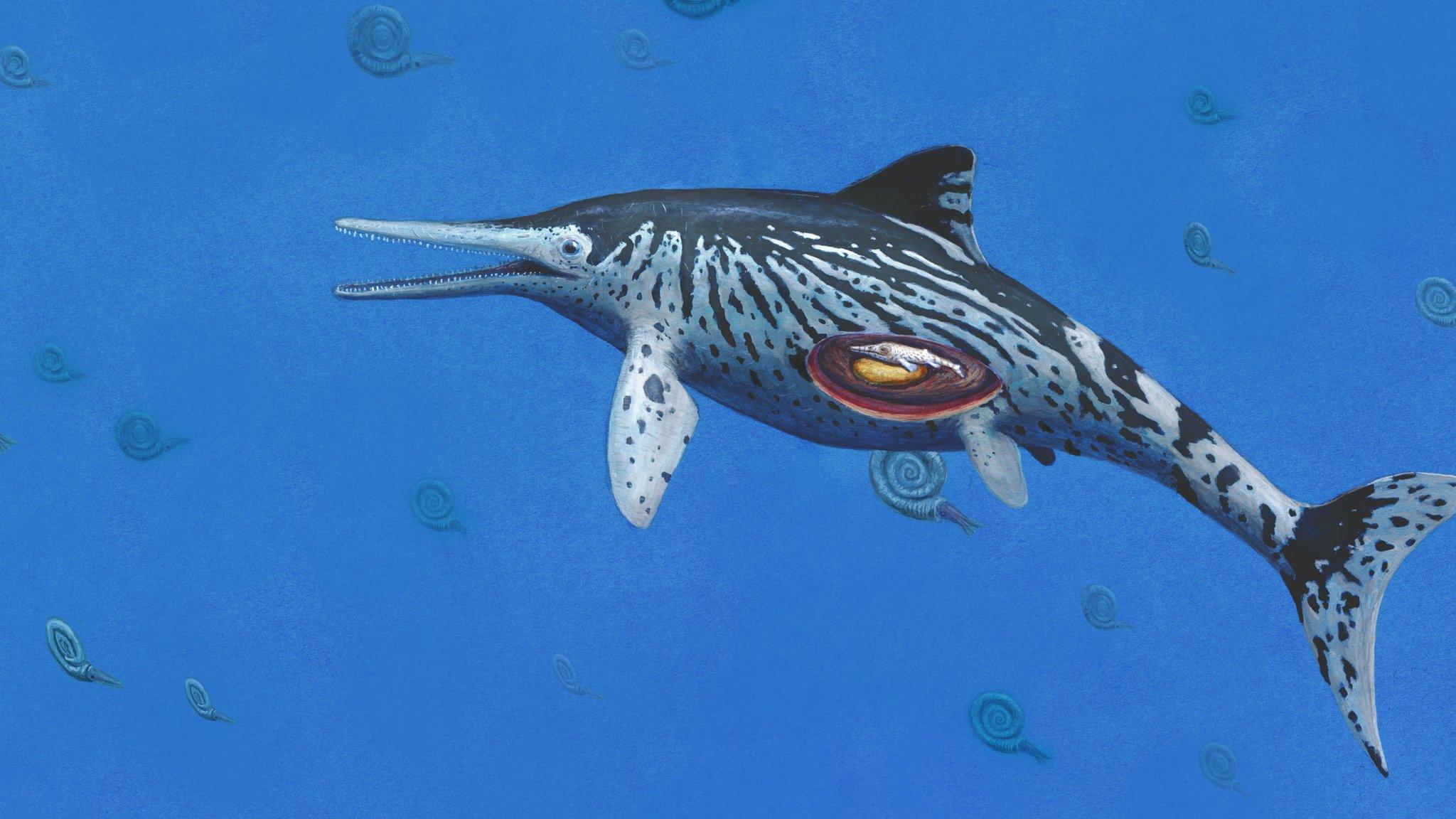The 'ugly duckling' fossil from the deep
- Published

Mosasaurs were huge carnivores that swam 66 million to 80 million years ago
The mosasaurs recently took a star turn in the Jurassic World movie, showing off the Hollywood version of their fearsome jaws.
Now an "ugly duckling" from 85 million years ago is shedding new light on the giant marine reptiles that lived at the time of Tyrannosaurus rex.
Scientists have long puzzled over how the diminutive fossil fitted into the family tree.
They now think it was still developing the distinctive long snout of its clan.
Takuya Konishi, a biology professor at the University of Cincinnati, took a second look at a small fossil unearthed more than 25 years ago in a rock formation in Kansas.
He found a protruding snout - the telltale sign of a Tylosaurus, a type of mosasaur that grew up to 13m in length.
"The degree of snout development was nowhere near that of an adult," he said. "It was the ugly duckling that hadn't yet become the graceful swan."

The fossil pieces were discovered more than 25 years ago in the US
Mosasaurs gave birth to free-swimming live young. The newborns might have had a different diet until they were fully grown, said Prof Konishi.
"It was hunting in a very different way from adults and adolescents. Maybe it was just going for smaller-size fish - a foot long at most."

Five Facts about Mosasaurs
Mosasaurs lived during the Cretaceous Period more than 65 million years ago
Some grew to almost the size of a school bus
They had a similar body shape to modern-day orcas, and were also top predators of the seas
There are many types of mosasaurs but the largest of them is called Tylosaurus
Some mosasaurs had powerful jaws capable of munching on the shells of sea turtles, but others had pointy teeth suggesting they snacked on fish

The fossils represent the youngest and smallest specimen of its kind ever found.
The research is published in the Journal of Vertebrate Paleontology, external.
- Published10 April 2018

- Published28 August 2017
